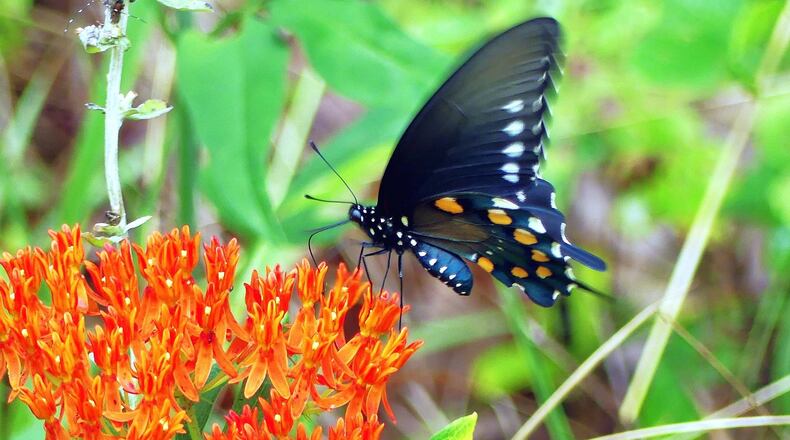June through July is prime bloom time for a family of native plants very important for Georgia’s butterflies and other native insects: the milkweeds, 22 species of which grow in the state.
For the monarch butterfly, milkweeds are crucial. Monarchs, of course, lay their eggs exclusively on milkweed leaves. The colorful caterpillars that hatch from the eggs voraciously consume the foliage.
Without milkweeds, there would be no monarchs, famous for their spectacular long-distance migrations. Milkweed leaves contain compounds highly toxic to most creatures but not to monarch caterpillars. The foul-tasting chemicals are incorporated into the caterpillars’ bodies and then into adult butterflies, thus protecting them from predators.
Getting most of the attention at this time of year, though, are milkweed blooms, which come in a variety of colors and shapes. "Milkweeds … are among the most intricately beautiful of wildflowers," says Georgia botanist Linda Chafin in her book Field Guide to the Wildflowers of Georgia and Surrounding States.
Perhaps Georgia's best-loved native milkweed is the butterfly weed (Asclepias tuberousa), whose bright orange flower clusters grace roadsides and sunny woodlands in summer.
The flowers of most milkweed species are rich in nectar, which nourishes scores of native pollinators such as moths, bees, ants, wasps — and butterflies. In addition to adult monarchs, butterflies that feed on the nectar include skippers, swallowtails, blues, fritillaries and hairstreaks.
Unfortunately, huge swaths of native milkweeds over the years have fallen prey to agriculture, development, roadside mowing and landowners who regard them as weeds.
The good news is that major efforts by numerous organizations and institutions — and landowners — are underway across Georgia to restore native milkweed populations.
IN THE SKY: From David Dundee, Tellus Science Museum astronomer: The moon will be new on Tuesday. Mercury is low in the west around dusk. Venus is low in the east just before sunrise. Mars is very low in the west around dusk and sets about an hour later. Mars and Mercury appear near the moon Wednesday evening. Jupiter rises in the east around midnight; Saturn does so a few hours later.
About the Author
Keep Reading
The Latest
Featured


